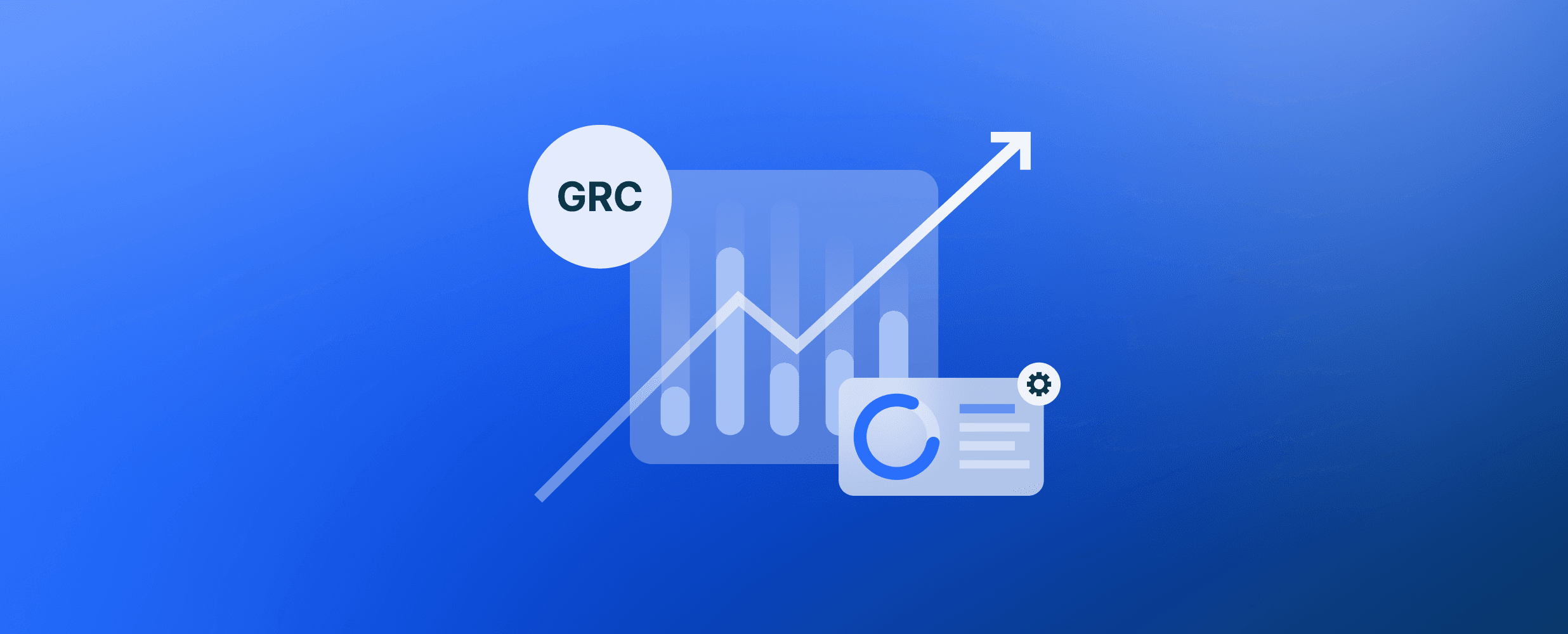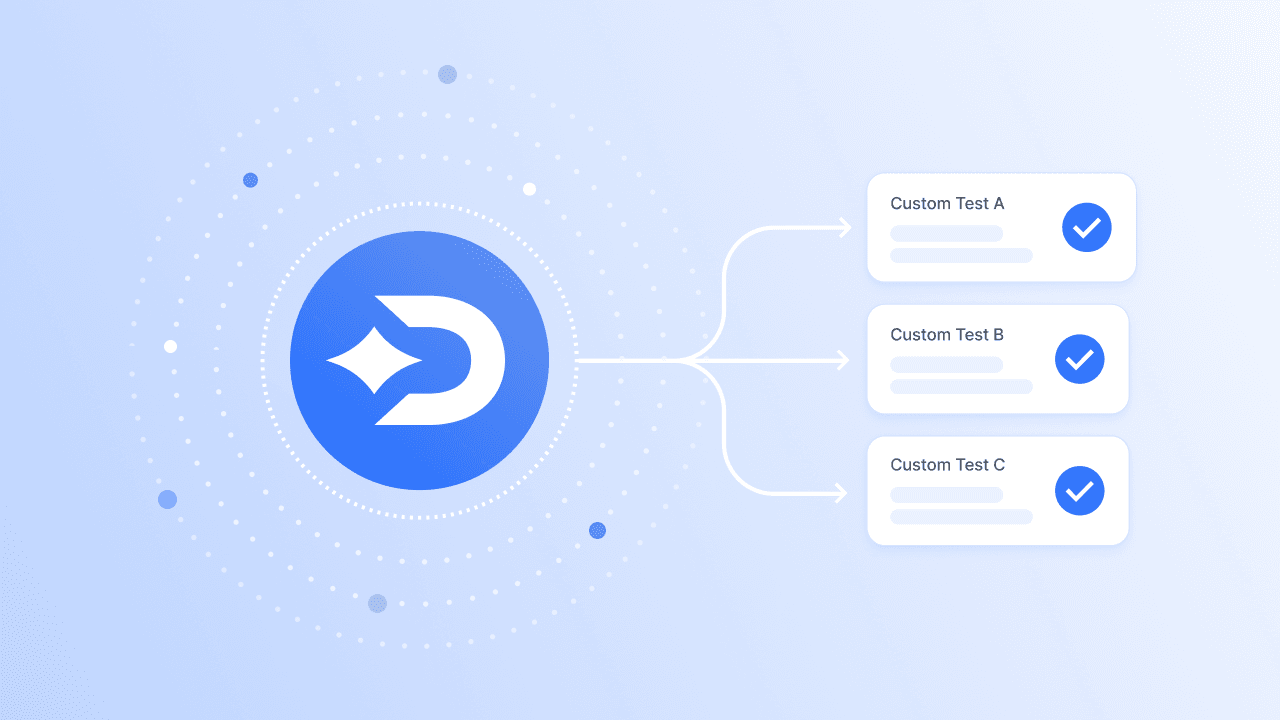The 98% Advantage: How Mature GRC Drives Business Success
By understanding the value of a mature GRC program and what one looks like, organizations can use their compliance posture to position themselves against competitors and gain additional internal efficiencies.
Security compliance is similar to the old school days of bubble tests and report cards. Organizations, customers, and auditors even use similar terminology, like passing audits or having a certain percentage of control coverage.
Similarly, organizations with a mature Governance, Risk, and Compliance (GRC) program can bump themselves to the head of the class by sharing their security grades with customers. As compliance moves from a cost center to a revenue generator, many organizations seek to leverage their compliance to shorten the sales cycle and build a competitive advantage.
By understanding the value of a mature GRC program and what one looks like, organizations can use their compliance posture to position themselves against competitors and gain additional internal efficiencies.
What Does a Mature GRC Program Look Like?
Increasingly, compliance mandates and frameworks offer variations on a maturity model approach to GRC. Just like the best teachers meet their students where they are, the most useful compliance frameworks are steps that align to different organizational maturity levels.
For example, the National Institute of Standards and Technology (NIST) Cybersecurity Framework (CSF) offers four tiers that map to different levels of risk governance and management maturity. The most mature programs, defined as “Adaptive,” have the following properties:
Organization-wide approach to managing cybersecurity risk
Risk-informed policies, processes, and procedures
Clearly understood relationship between cybersecurity risks and organizational objectives
Executives who monitor cybersecurity risk as they would financial and other risks
Budgets based on current and predicted risk environment and tolerance
Business units that analyze system-level risks within the overarching organizational risk context
Evolving cybersecurity practices using previous and current activities, like lessons learned and predictive indicators
Continuous improvement processes with the technology and practices to respond to changing technology, regulatory, and threat landscapes
Real-time or near-real-time data for acting on security risks
Constantly sharing cybersecurity information throughout the organization
If broken down into more general categories, a mature cybersecurity GRC program looks like this:
Identifies security risks impacting business operations and sensitive data
Maps security and compliance objectives to current and future business operations
Incorporates cybersecurity risk into all daily activities across all lines of business
Continuously improves on risk management in parallel with the changing technology, threat, and regulatory landscapes
Provides real-time data to all relevant stakeholders across all business functions
What is the 98% Advantage?
When educators talk about the 98th percentile, they’re talking about students in the top 2% who outperform 98% of their classmates. In compliance, the “98% advantage” typically relates to an organization’s compliance maturity. Companies that fall into this category typically have programs that:
Leverage automation and artificial intelligence (AI) to reduce manual, time-consuming, error-prone tasks.
Proactively communicate security and trust information with stakeholders.
Integrate systems and analytics dashboards that tie GRC efforts to business metrics.
However, while this may seem ideal, the State of GRC Report 2025 found that 93% of surveyed organizations have critical aspects of their GRC program that require manual intervention and still need to be automated.
To understand that challenge further, 60% of surveyed organizations manage at least five different compliance frameworks while the average GRC function manages eight frameworks.
What are the Benefits of the 98% Advantage?
Students in the 98th percentile in school often gain acceptance to some of the most elite colleges and universities. Similarly, having a GRC program that is more mature than 98% of competitors provides significant benefits.
Reduced Risk
Compliance acts as a way to “double check” the organization’s security controls, ensuring they remain effective. Organizations with mature GRC programs define security controls to protect data and systems then map them to the required compliance frameworks. Essentially, while compliance is not security, compliance documents the organization’s security posture. Organizations with a mature compliance program reduce:
Data breach risk: Controls protecting data work as intended
Human error risk: Reduced likelihood that people will make mistakes when using manual processes, like failing to complete access reviews in a timely manner when people forget to send reminders to responsible parties
Compliance risk: Continuous real-time documentation for all compliance activities
Enhanced Efficiencies
In organizations with mature programs, compliance drives efficiencies rather than creating inefficiencies. Compliance is embedded into various business functions, including:
Development: Securing the software development life cycle (SDLC) is critical for any business providing customer-facing applications.
Time-to-market: Automating compliance documentation ensures that developers and AppSec teams can deliver secure applications faster.
Sales: Sales teams need to respond to security questionnaires as part of the customer procurement process.
GRC: Compliance functions must collect audit documentation and respond to auditor questions.
Legal: Corporate counsel needs to have access to compliance information as part of working on contracts.
Improved Stakeholder Trust
Different internal stakeholders need different information to complete their job functions. Organizations with mature GRC programs no longer need to gatekeep their sensitive compliance information. They create a single location that provides each function the access to information that it needs, limiting it according to the principle of least privilege. Additionally, organizations that leverage their matured compliance posture to improve revenue enable transparency by using a trust center that displays the information people need to know.
With a trust center, organizations control the information they share through an allow list or public display to streamline sales and improve overall confidence in their security posture, including security reports, like:
Vulnerability assessments and penetration test summaries
Certifications and attestations
Security policies
Key Characteristics of a Mature GRC Program
According to the State of GRC Report, only 37% of organizations feel that their program is fully matured with 41% identifying their program as still in a developmental stage that requires additional work. These organizations understand the value of being in the 98th percentile but need tools and processes that help them achieve their objectives.
Central Compliance Hub
A single source of compliance truth is critical for any mature GRC program. Data silos across the security space can lead to data breaches by creating blindspots. The same is true in compliance. When organizations have their compliance data in different tools and spreadsheets, they have a difficult time managing audit and customer requests. With a central hub for all compliance information, everyone works from the same understanding.
By centralizing compliance data, organizations can:
Integrate with their human resources systems, single sign-on, cloud providers, and DevOps tool chains to aggregate all necessary control monitoring and enforcement data.
Automatically gather evidence without taking screenshots or managing the data in spreadsheets.
Share information across all stakeholders while enforcing the principle of least privilege to protect sensitive data.
Improve audit efficiency by reducing back-and-forth communication and switching between different tools where the evidence resides.
Real-Time Visibility
A dynamic security posture often means a dynamic compliance posture. In cloud environments, configuration drift or a compromised credential can lead to a security incident. Since compliance is about reviewing the effectiveness of security controls, these events can lead to violations. Organizations with a mature GRC program have real-time visibility into:
Risk using dashboards that continuously monitor and alert teams to new or evolving threats.
Compliance status based on evidence, controls, and current documentation.
User access by integrating tools with employee and privilege level data to create alerts for changes in access between formal access reviews.
Automation and AI
With automation, organizations reduce human error risk. Meanwhile, AI streamlines tasks, especially when leveraging large language models (LLMs) that can ingest large volumes of data to summarize complex reports or respond to data-based questions.
Organizations with mature GRC programs leverage these capabilities to:
Build no-code tests with custom logic to automate and customize control monitoring.
Automate evidence collection to gather more information without increasing administrative burdens on staff.
Receive and respond to security questionnaires using AI that automates question extraction without coordinating across security, legal, and sales functions.
Executive Buy-In
Senior leadership and the board of directors need to have compliance information as part of their governance functions. However, they focus on strategy and aligning compliance with business objectives. A mature GRC program gives them the data they need in the way that they need it. By using a central hub for all compliance data, executives gain visibility into:
Vendor risk management (VRM) program effectiveness for informed decisions about the third-party ecosystem and potential security impact.
Proactive vendor monitoring to reduce blindspots and security gaps.
Treatment plans based on the organization’s risk, including impact and likelihood, to identify ways to improve security.
Risk and compliance effectiveness with dashboards that track risk and assessment progress, like approved policies and the number of controls preventing audit and compliance readiness.
How Drata Helps Mature GRC Programs
Drata’s GRC platform provides the customization and automation that organizations need to achieve their full compliance potential. Our platform offers:
Pre-mapped risk library and custom risk scoring capabilities so organizations can streamline risk assessments while still defining thresholds that meet their specific needs.
Treatment plans based on risks’ impact and likelihood to help accelerate audit readiness.
A Trust Center that organizations can use to expedite customer security reviews by showing them pertinent security information, either on an as-needed basis or publicly.
AI-based security questionnaire assistance to accelerate deals, save time, and unify review processes.





